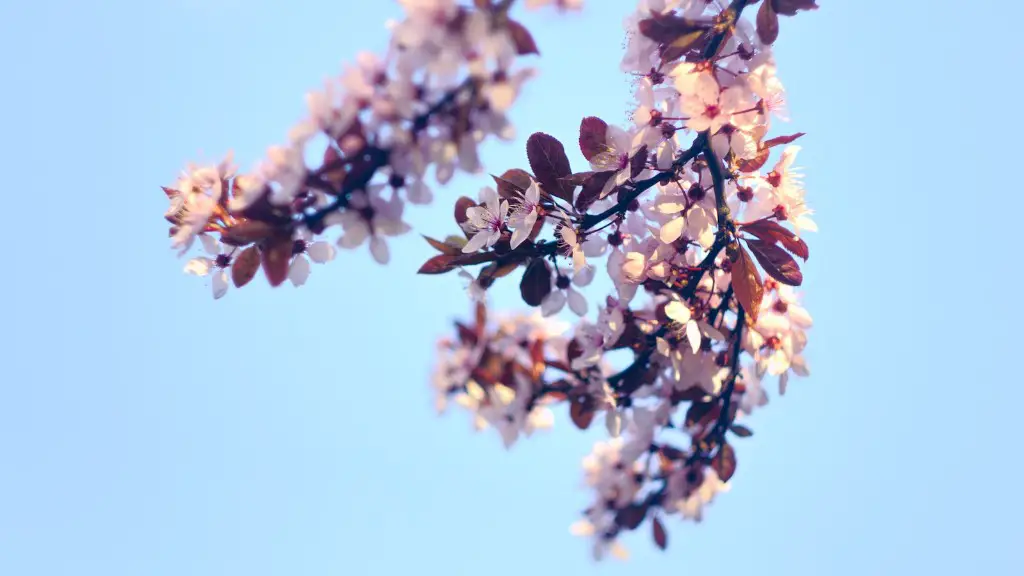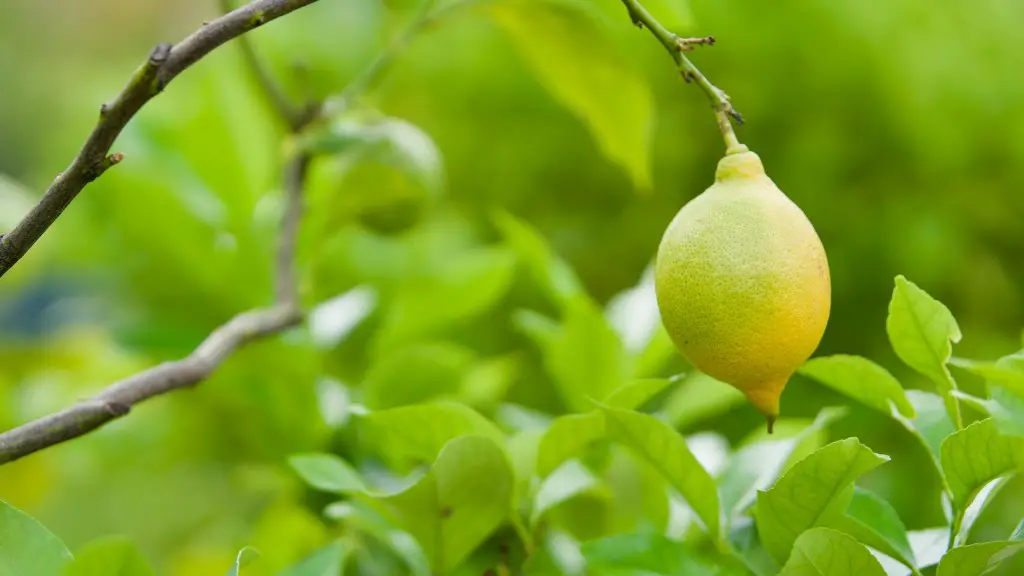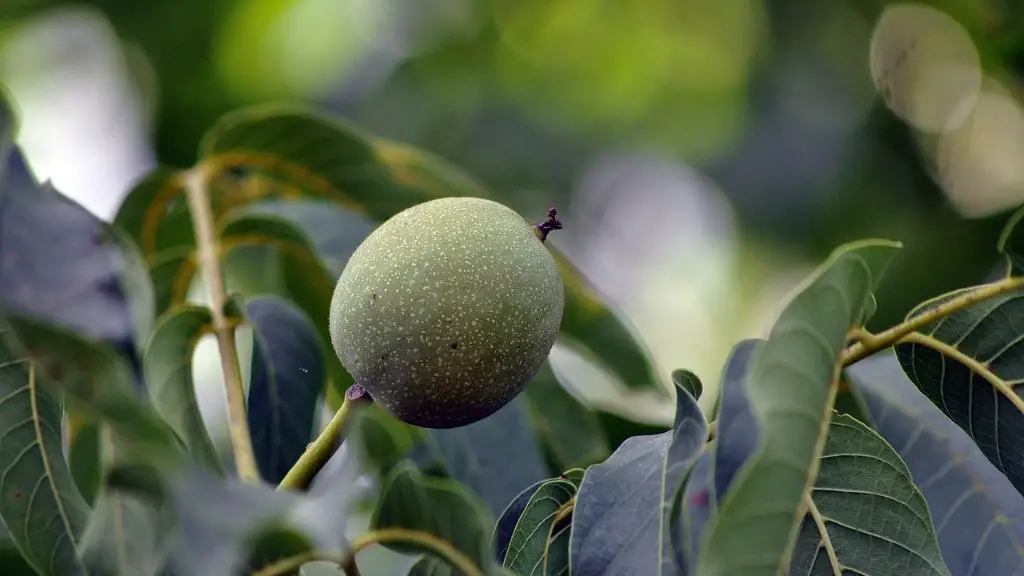Lemon tree leaves yellowing is a sign of stress from either environmental or nutritional issues. It is a common problem for citrus cultivation, but it does not always mean that the lemon tree is in danger. Understanding why lemon tree leaves are turning yellow is important for keeping the plant healthy.
When lemon trees are exposed to the hot sun, it can cause their leaves to turn yellow. This is often due to the leaves not being able to photosynthesize properly. Photosynthesis is the process by which plants use light energy to turn carbon dioxide and water into oxygen and glucose. Too much or too little sunlight can result in this process stopping, making the leaves yellow.
Nutrition is another factor that can cause lemon tree leaves to turn yellow. Lemon trees need certain nutrients to remain healthy: nitrogen, phosphorus, potassium, and magnesium. If these are lacking, the leaves will start to yellow as the bodies adaptive response to conserve energy by dropping its chlorophyll pigments.
Additionally, over-watering can be a factor in causing the leaves to turn yellow. If the plants are not able to dry out properly, the root system can become clogged by the water, leading to root and stem rot, resulting in yellow leaves.
At the same time, under-watering can also be a factor. Especially in hot, dry climate, lemon trees need more water than usual and if they don’t get enough they can become water-stressed, resulting in yellowing of the leaves.
Finally, pests and diseases can also lead to the lemon tree’s leaves turning yellow. Insects can sap the plant of its necessary nutrients, while diseases like root rot can cause the leaves to yellow as a sign of distress. Inspecting the lemon tree regularly is important to preventing such problems.
Environmental Factors
Environmental factors such as sun exposure, temperature, humidity, and wind can all have an adverse effect on lemon trees. Hot or cold temperatures outside of their usual range can cause the tree to become stressed, resulting in yellow leaves. Strong winds can dry out the leaves, causing them to wilt and turn yellow. And in humid environments, pathogens and mold can spread quickly, causing yellowing of the leaves as a side effect.
Proper positioning of the tree is also important. Lemon trees need to be in a sunny spot that is also well-ventilated. Placing the tree in a spot that gets too much sun can cause leaf burn, resulting in yellowing of the leaves. Similarly, placing the tree in a spot that doesn’t get enough sun can cause the leaves to become weak and yellow.
Finally, lemon trees need consistent watering. Lemon trees need to be watered regularly, but not over-watered. Watering too often can lead to root rot, while not watering enough can lead to water stress. Both can lead to yellowing of the leaves.
Nutrition Factors
Nutritional deficiencies can cause the lemon tree’s leaves to turn yellow as a warning sign. One of the most common deficiencies is nitrogen, which is essential for the growth and development of citrus trees. If the soil is low in nitrogen, the leaves will become yellow as a sign that it needs to be replenished. Similarly, low phosphorus, potassium, and magnesium levels can cause the leaves to yellow.
Fertilizing is an important part of lemon tree care, as it helps replenish the plants’ nutrients. A good organic fertilizer should be applied in the early spring and again in mid-summer. Too much fertilizer can damage the tree and also cause yellowing, so it’s important to follow the instructions on the packaging.
An important thing to remember is that nitrate-based fertilizers are not recommended. They can cause soil toxicity and may also lead to yellowing of the leaves.
Finally, regular soil testing is the best way to determine the soil’s nutrient levels and to help prevent yellowing of the leaves.
Pest Problems
Pests and diseases can lead to yellowing of the leaves in several ways. Aphids, mealybugs, and scale can all be a problem for lemon trees and can sap the plant of energy and nutrients, resulting in yellow leaves.
Inspecting the tree regularly and taking preventive measures is the best way to keep pests at bay. Encouraging natural predators with hedges or installing birdbaths can help, as well as using approved pest treatments if necessary.
Fungal diseases can also be a problem, particularly in humid conditions. Applying approved fungicides, mulching, and keeping the leaves dry can help to prevent fungus from appearing.
Finally, it’s important to remember that some pests and diseases can be very difficult to treat, so it’s best to consult a professional if the problem persists.
Leaf Disorders
The yellowing of a lemon tree’s leaves can also be caused by a number of leaf disorders, including chlorosis and necrosis. Chlorosis is caused by a lack of chlorophyll and can result in the leaves turning yellow due to a deficiency in the soil, improper irrigation, or poor air circulation.
Necrosis is another common leaf disorder that can cause the leaves to turn yellow. It is caused by an invasion of soil-borne fungi and can result in yellow or brown spots on the leaves. Pruning affected branches can help to prevent the spread of necrosis to the rest of the tree.
Leaf scorch can also occur if the tree doesn’t get enough water or is exposed to high winds. It is caused by a lack of moisture in the leaves and can result in yellow patches or even entire leaves turning yellow.
Identifying the cause of leaf yellowing is the key to treating the problem. Paying attention to the environment and nutrition of the tree, inspecting it regularly for pests, and being aware of possible diseases can go a long way towards keeping the tree healthy and its leaves bright green.




